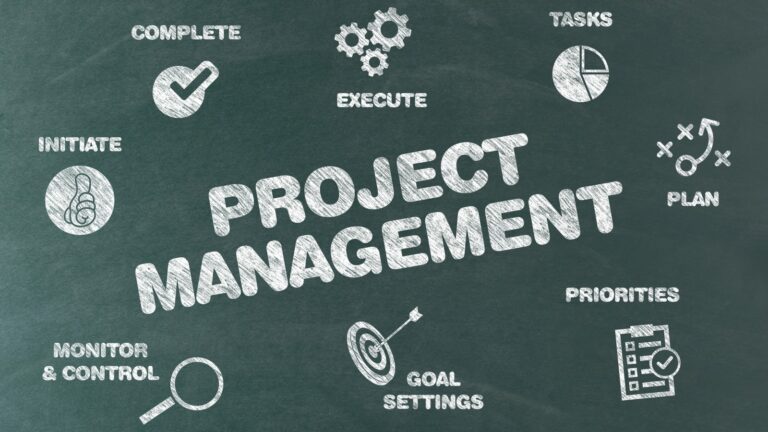One or more persons will generally manage facilities and project management. For instance, a facilities manager could exclusively work with different departments of a company to design decisions based on user requirements, particularly ensuring the project meets the required functionality, comfort and safety standards. In contrast, a project manager would look into the overall process from planning to designing and constructing the idea from conception to completion. Facilities and project management in this context, however, refer exclusively to the property management or real estate sector. Irrespective of whether one or two people handle facilities and project management, multiple types of contracts are executed in the process. This blog will detail some of them.
But First - What is Facilities Management

Tools and services that support the functionality, safety and sustainability of buildings and real estate refer to facilities management. This would entail lease management, maintenance and operations, capital project planning, property management, space management and more. The importance of facilities management is also encapsulated by ISO, which notes facilities management looks at the organisation function, which integrates people, place and processes within the environment with the aim of improvising the life of people and the productivity of the business. The exact scope of facilities management may also depend on whether one is considering Hard Facilities Management or Soft Facilities Management. While the former refers to handling and managing physical assets like elevators, coolers and plumping, the latter refers to services performed by people such as groundskeeping, security, and custodial services.
What, then, is Project Management?

Originally a concept exclusive for the construction industry to manage scheduled repairs, cost and specifications, project management is now a core aspect in almost any industry. Project management considers the overall picture, looking at how every component comes together and is interrelated. Every property or real estate project is unique, requiring different processes to be followed, all of which may have varying levels of complexity. One significant aspect that needs to be considered in project management is the duration and the total cost that will be borne at the end. Many projects in the property sector span more than two years, thereby requiring one to make estimations of the possible price fluctuations they may have to expect when making the budget.
Two Important Contracts in Facilities and Project Management

Many types of contracts are used in facilities and project management. While a company may adopt only the contracts that are most relevant to them, the following contracts are worth considering:
Fixed Price Contracts
Fixed price contracts refer to agreements where the price is already agreed upon at the onset, and the seller bears the risk. Also known as a lump-sum or firm-price contract, this agreement will result in one party setting the price and the other agreeing. It is almost like entering a grocery store and purchasing an item for the price indicated. In other words, no negotiation takes place. This form of contract, while benefiting both parties in terms of ascertaining the price that needs to be paid, is only suitable for situations where the project scope can be determined at the outset. Moreover, these agreements do not detail the process, as regardless of the number of steps included, the price remains the same. However, not all fixed-price contracts are that straightforward. There are three main types of fixed-price contracts that are of importance:
- Firm Fixed Price: This is the most common type of fixed price contract whereby the price specified will not be subject to change. The main purpose is to offer certainty, although it places maximum risk and full responsibility for costs and any profit or losses upon the contractor. A seller can use this contract to benefit if the prices of the items, supplies or services used are significantly reduced. A firm fixed price is most appropriate when the items are already available at a reasonable price, resulting in the probability of bearing higher costs being reasonably lower. Many local governments use this, although whenever funding is, reduced or offices are reorganised, the lack of flexibility to deal with changes leads to delays.
- Fixed Price Incentive Fee: Unlike the former, where it is only the seller that bears a risk, here, both parties share the risk. This type of fixed contract includes a ceiling price which denotes the maximum price the buyer is willing to pay. Afterwards, a target cost and a target profit are set whereby the seller will receive the target price if the buyer makes it for the target cost. If, however, according to an agreed share ratio, the contractor completes the project for a lower amount than the target cost, he is subjected to a higher price. The buyer and the contractor will bear any cost that goes beyond the target price based on the ratio.
- Fixed-Price with Economic Price Adjustment: This form of a fixed-price contract is entered into when it is a long-term project. Specifically, this would be when there are doubts or fears that the market or labour conditions would not be stable to survive until the project is completed. Hence due to the cost of labour or materials, fluctuations in the currency rate conversations inflation, and other conditions that are beyond the control of the buyer and seller, the parties can set a pre-defined criteria for price adjustment. The parties need to agree on a fixed price when signing the contract and the criteria for adjusting it. Consequently, even this form of fixed price contract remains to have a certain level of certainty.
Cost-Reimbursable Contracts
This form of the contract refers to an agreement where the risk primarily falls on the buyer. This is because the buyer has to reimburse the seller for the actual cost incurred and then also pay a profit. Where the project lacks a clear statement of work when the contract is signed and where it appears to the seller that the risks are too high, a cost-reimbursable contract is made. Hence, the final pricing is determined only after the completion of the project although the buyer may provide a cost estimate to influence the seller to stick to an estimated budget. The construction industry is one sector that mainly uses this form of contract frequently. Out of the many cost-reimbursable contracts, the following demonstrates different risks borne by the buyer:
- Cost Plus Percentage of Cost: Cost plus percentage of costs is primarily used when the project requires a lot of customisations or is frequently subject to changes. This is where the entire risk falls only on the buyer, therefore, being the least desirable form of contract from the latter’s point of view. Where specifically no effort is estimated by the buyer, an unethical seller may act contrary to control costs, leading the buyer with extensive payments to be made and providing the profit fee for the seller. The seller, however, does have to act in some form of due diligence since they need to track the list of expenses, all of which need to only have bills that amount to reasonable costs based on the type of items purchased.
- Cost Plus Fixed Fee: Here, some form of risk is also borne by the seller. It does this by first requiring the buyer to reimburse the seller for the actual cost and then offering an additional fee based on the buyer’s satisfaction with the standards outlined in the contract. This influences sellers to ensure that high-quality output is maintained. Also known as cost reimbursement, cost plus or abbreviated to CPFF can come in one of two forms. It can be a complete contract which specifies goals and objectives and expected end product, or a term contract. It is also worth noting that cost plus fixed fee offers the parties to agree on a pre-determined fixed fee reimbursements. Consequently, the seller is restricted to a fixed amount, thereby offering a form of control to the buyer.
- Cost Plus Incentive Fee: The risk the seller bears in this situation is equally shared with the buyer Here, the buyer reimburses the seller for the actual cost and pays an incentive fee that is predetermined and outlined in the document. This offers clarity to the extent that the contract specifies how the seller will assess the level of achieving certain objectives. This offers an incentive for the seller to control costs and provides motivation to complete the project within the stipulated timeframe and budget. Where the cost exceeds, it would significantly affect their profits. This type of contract is commonly used in engineering or construction projects.
Take Your Pick
As a facilities and project manager, you need to consider the type of contracts you want to execute. Deciding on what is most profitable for you and narrowing it down to one type of contract under the broad categories of fixed-priced contracts and cost reimbursement contracts is essential before drawing up the terms and conditions. Take your pick smartly.







